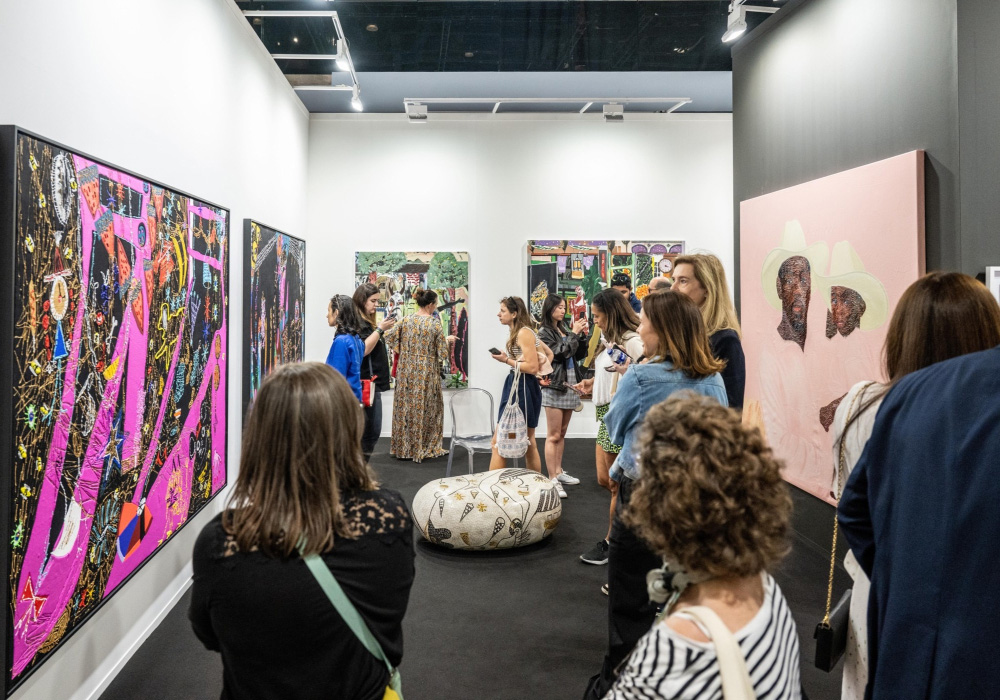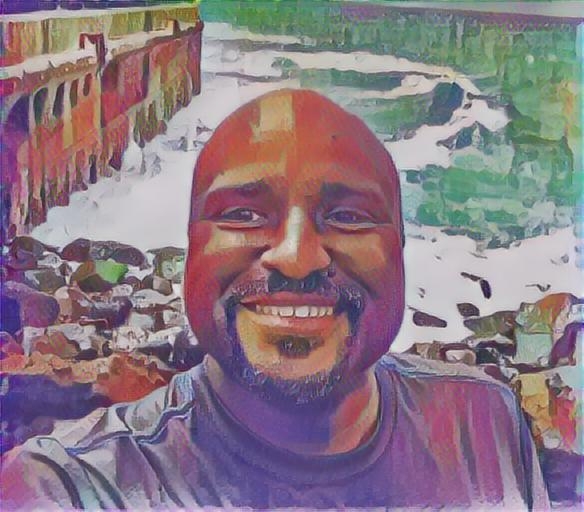Art Dubai’s 20th anniversary line-up signals an exciting new chapter for the region’s cultural landscape. This milestone edition brings together global and regional voices within a framework that reflects the rapid expansion of the Middle East’s contemporary art scene.
I’ve spent the past few years immersed in the arts and culture landscape across Saudi Arabia, especially through my work on Riyadh Art, the Ministry of Culture, and Riyadh's growing contemporary art ecosystem. Along the way, Art Dubai has kept popping up in my research like a recurring reference point. It’s one of those events that consistently shapes conversations about creativity in the region, yet—strangely enough—I’ve never actually attended.
That changes soon ... inshallah. With Art Dubai announcing its first participants for the fair’s 20th anniversary edition in April 2026, I’m already eyeing my calendar. The line-up looks compelling, the curatorial themes resonate with the region’s momentum, and the fair’s evolution mirrors the wider transformation happening across the Middle East’s contemporary art movement. The pace of growth has been phenomenal, and Art Dubai 2026 seems ready to mark that next leap.
A landmark year: Art Dubai turns 20
The 20th anniversary edition runs from April 17–19, 2026, at Madinat Jumeirah, with preview days on April 15 and 16. More than 100 gallery presentations from over 35 countries will be showcased under a unified curatorial lens titled “Future, Past, Present.”
It’s also the first edition under the fair’s new director, Dunja Gottweis, who’s stepping into the role with a revamped vision. The fair’s sections have been reorganized into five distinct platforms:
- Galleries (modern and contemporary art)
- Zamaniyyat, curated by Dr. Sarah A. Rifky
- Bawwaba, curated by Amal Khalaf
- Art Dubai Digital, curated by Ulrich Schrauth and Nadine Khalil
- Bawwaba Extended, co-curated by Amal Khalaf and Alexie Glass-Kantor
This new structure feels intentional—a way to honour the fair’s history while embracing experimentation, digital innovation, and cross-cultural dialogue.
A region in motion
What caught my attention, especially after years of watching the Gulf’s cultural ecosystem expand, is how Art Dubai continues to position itself as a bridge between global art currents and regional perspectives.
More than half of the 2026 participants come from MENASA, including 25 galleries with physical spaces in Dubai. There’s also a notable rise in exhibitors from Africa and Latin America. This shifting representation mirrors a larger regional confidence, where art fairs across the Gulf are carving out their own narratives rather than echoing existing global templates.
As someone who has spent the past years working on major cultural and public art initiatives in Saudi Arabia, I’m always curious to see how neighbouring cities shape their artistic stories. Dubai’s role as a commercial art hub gives it a different rhythm—market-driven yet experimental, cosmopolitan yet rooted in regional histories.
Highlights from the 2026 line-up
Galleries
Newcomers include Galerie Frank Elbaz (France), ChertLüdde (Germany), Labor (Mexico), and Galerie Peter Kilchmann (Switzerland). Several well-known galleries are also returning after a hiatus, such as Selma Feriani Gallery (Tunisia) and Loft Art Gallery (Morocco). The mix spans continents, methodologies, and generations—a welcome sign of renewed energy.
Zamaniyyat
This section explores modernisms across multiple geographies, specifically from the 1950s to the 1990s. What I find fascinating here is how the curation challenges the familiar, often linear, narratives of global modernism.
From the Casablanca Art School lineage to abstraction in Beirut, Damascus, and Baghdad, Zamaniyyat celebrates art histories that unfolded through different movements, institutions, and social realities. It’s a reminder that modernism was never a single story.
Bawwaba
Bawwaba continues to serve as a portal into emerging and mid-career artists who work through questions of movement, belonging, research, and contemporary experience.
The 2026 roster includes:
- Arébénor Basséne (Senegal)
- Nahla Tabbaa (Jordan)
- Katia Kameli (France)
- Mohammed Al Hawajri (UAE/Palestine)
- Adrian Pepe (Romania)
What stands out here is the new Bawwaba Gallery Support Programme, which reduces financial pressure on smaller galleries. It’s an encouraging move that supports sustainability—something our region’s art markets need in order to thrive long-term.
Art Dubai Digital
Digital art continues to mature in the Middle East, and Art Dubai has played a major role in that evolution.
The 2026 edition is titled “Myth of the Digital,” exploring digital art not as a futuristic concept but as an active cultural force.
Some of the names being highlighted include:
- Six N Five (Italy)
- Marina Abramović (India/UK collaborations)
- Rachel Rossin (UK)
- Morehshin Allahyari (UK/Azerbaijan)
- Daniel Iregui (Canada)
Alongside these are emerging artists from the UAE, Turkey, Iran, and the US. This diversity reflects how digital practice sits at the crossroads of tech, culture, and sensory storytelling—a space I’ve become increasingly interested in while working on light art festivals and public installations in Saudi Arabia.
Bawwaba Extended
This new addition is dedicated to large-scale immersive installations that expand beyond the conventional booth format. It aims to activate Madinat Jumeirah as a living cultural site. More details will arrive in January 2026, and I’m curious to see how these installations reshape visitor engagement.
Why Art Dubai 2026 feels like the right moment
The Middle East’s cultural landscape is expanding with remarkable speed, and events like Art Dubai play a vital role in shaping that shared momentum. They create a connective tissue between artistic communities in Dubai, Riyadh, Jeddah, Sharjah, Manama, Doha, and so many other places where contemporary expression is gaining new ground. What emerges is a regional conversation that feels increasingly confident, collaborative, and globally interesting.
With the 20th anniversary edition ahead, the timing feels significant. The curatorial direction is ambitious, the geographic diversity is widening, and the energy around the fair reflects a broader cultural shift that’s still unfolding. By April 2026, those conversations will only deepen, and the networks between artists, curators, and cultural institutions will be even more intertwined.
The early announcements already hint at an edition shaped by curiosity and boldness, and I’m looking forward to experiencing that atmosphere up close.



